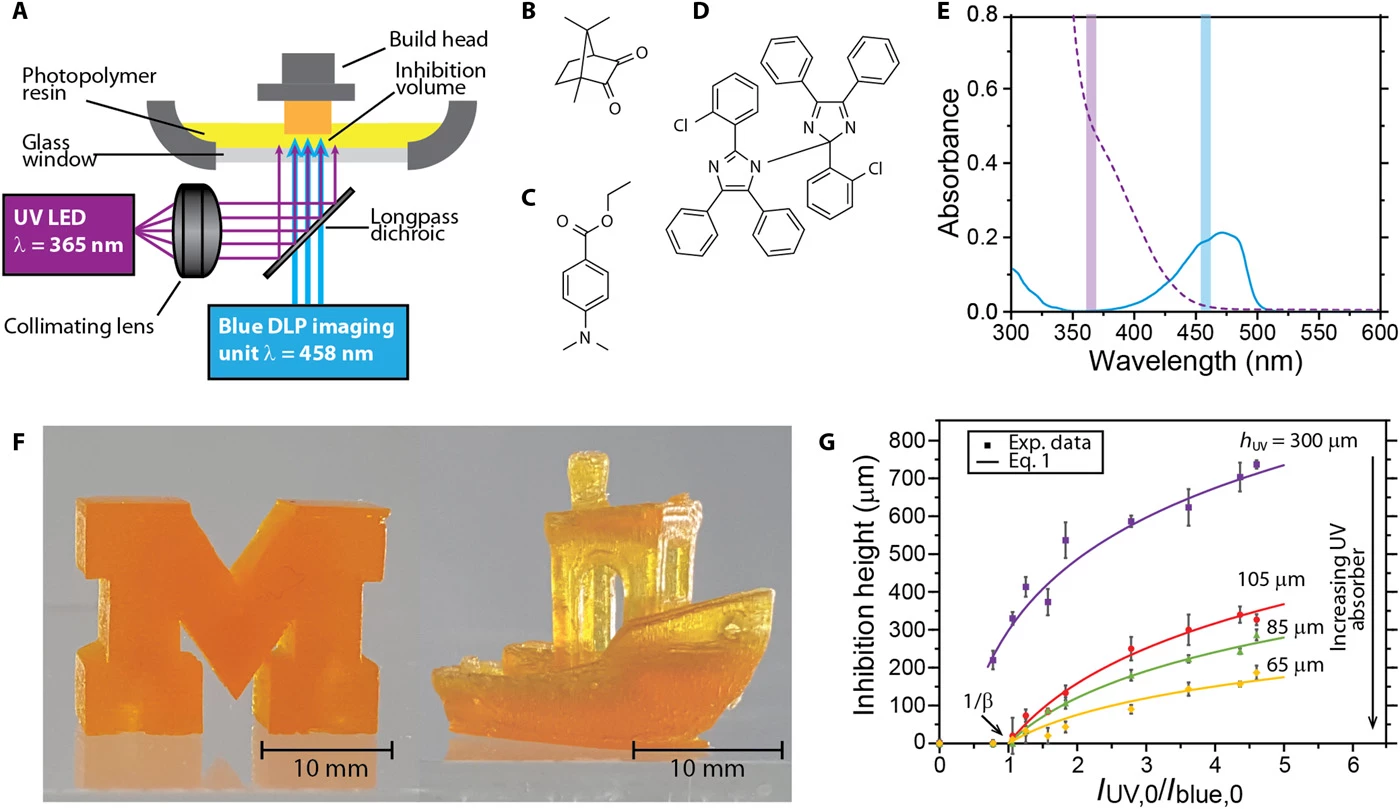High-speed 3D printing

Concurrent, two-color photoinitiation and photoinhibition. CC BY-NC.
Researchers at the University of Michigan have developed a new technology for 3D printing that is 100 times faster than conventional additive printing. If you’ve ever stood around a 3D printer watching it build your object at an agonizingly slow pace, you’ll be bowled over by the video below. The technology solidifies liquid resin using lights of two different wavelengths (365 and 458 nm) to control where the resin hardens and where it stays fluid. The key to success is the chemistry of the methacrylate resin. A photoactivator hardens the resin wherever one of the lights shines while a photoinhibitor, which responds to the different wavelength from the other light, prevents curing.
⇨ Michigan Engineering, “3D printing 100 times faster with light.”
⇨ Phys.org, “Rapid and continuous 3-D printing with light.”
